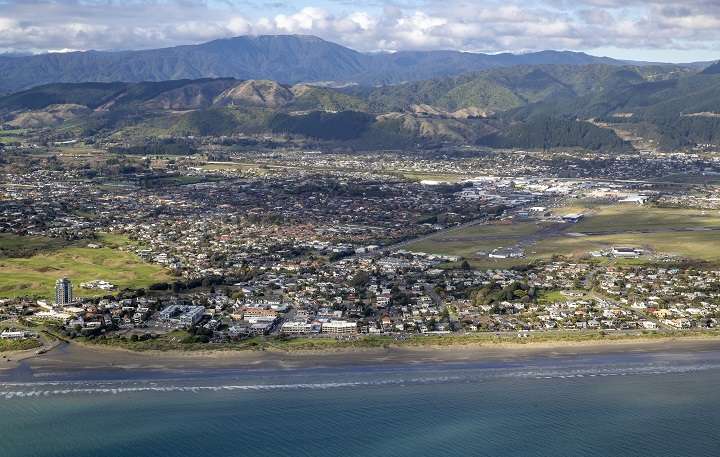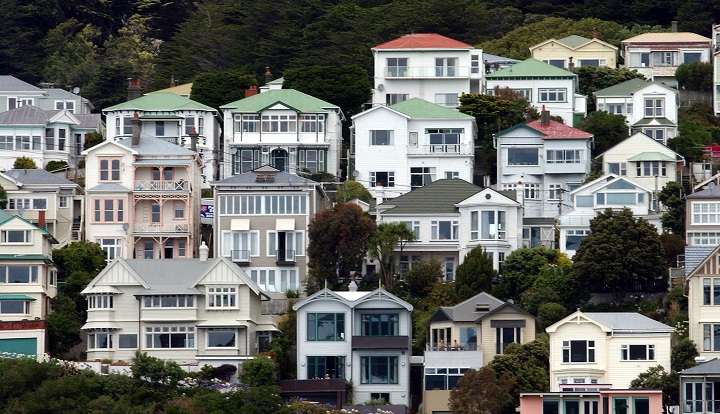Wellington buyers are so desperate to secure a home post Covid-19, that most properties that hit the market receive dozens of offers, some within hours of listing.
And agents report that even offers of almost 40 percent above CV don’t get accepted.
Tall Poppy Real Estate owner Mike Seymour says properties between $450,000 and $700,000 have been recently selling “ridiculously” way above council’s rating.
He had a recent buyer show up at the office and with an offer 40 per cent above the CV only two hours after the house was listed.
Start your property search
READ MORE: Is this Wellington’s most affordable waterfront real estate?
He was “very animated and upset” that the offer was not immediately presented to the vendor, Seymour says.
“It wasn’t as though it was sitting on the market for a while, waiting for an open home...it went on two hours before. He was upset we didn’t take the offer.”
Seymour says the property heat is moving from Wellington city and up to in Porirua, Kapiti Coast and Lower Hutt areas.
He says about a 70km-long corridor from Kapiti Coast to Wellington is rapidly developing with the coast being built up and Wellington city expanding north.
“We have two agents in Porirua area and they are flying, processing massive number of sales. We’ve seen section prices in Kapiti Coast in the last year go up 30 per cent.”

Kapiti Coast is one of the hot spots in Wellington with sections going up 30 per cent in price compare to last year. Photo: Mark Mitchell
Tommy’s Real Estate agent Ben Ryan, who focuses on the city area, says each listing would get about 10 to 12 offers.
The office sold 73 houses in August. But that is just half of the sales volume of last year as he says there is a shortage of properties being listed in Wellington.
“Because the demand is so high, people are looking at anything and everything within their price range.
“We’re seeing properties from first home buyers right up to a higher end $3 million all being very popular. So, it’s crazy all over the place,” Ryan says.
There is an influx of ex-pats in the area too and they’re looking for bigger four-bedroom homes with a spacious backyard or newbuild townhouses.
“They are cashed up and willing to spend it. As you can imagine,” he says.
Wellington region general manager for Bayleys residential, Grant Henderson, says for the past two years he heard “the broken record” of Wellington not having enough listings for the demand.
“If we didn’t list anything for six weeks, there would be nothing left. Normally, we’d have about double what we have,” Ryan says.
With low interest rates and LVR restrictions lifted he says the competition is now even harder and prices are increasing as a result.
“Anything between $580,000 and $750,000 is sold with multiple offers every week to first home buyers.”

People are moving further away from the city because that's where the stock and best value for money is. Photo: Ross Setford.
Wellington central is becoming less affordable and people are moving further away to get best value for money.
“People have been forced to move away from areas they thought they wanted to live in and they just have to make amends on what they can put up with.
“Unless we see a whole lot more homes come into the market - nothing is going to change.”
About 25 minutes drive from the city central is Tawa - the new hotspot, Henderson says.
“You look at the growth of the North Shore from Takapuna, to Milford and to Browns Bay and now Wellington is growing north and doing the same thing,” he says.
Tawa was formed in the late 1940s and was subdivided in 1980s, making it a fairly new area for Wellingtonians to move to.
Also on the north side, about 8km from the city, is Newlands, a 1950s suburb.
A recent Bayleys listing had 320 visitor groups look at the property during open homes, with 54 registered bidders and 14 active bidders at the auction.
The property, which had a CV of $610,000, had an opening bid of $750,000 which “blew people out of the water”. The three-bedroom home sold for $850,000, $240,000 above CV, Henderson says.
“It was a do-up in an area that was never really popular but now has access to infrastructure - it’s just amazing,” he adds.
However, the booming sales in the region have not prompted more vendors to put their houses on the market.
Economic commentator Tony Alexander says New Zealand entered Covid-19 with property listings down 27 percent from March 2019 and they were still 13 percent down in August, compared to last year.
"There is now so much awareness of a shortage of stock that agents are reporting vendors as being unwilling to sell because they do not want to run the risk of bit being unable to quickly purchase a new suitable property.
“The listings shortage has started to feed on itself in a self-perpetuating manner,” Alexander says.
Bindi Norwell, Chief Executive at REINZ says that eight regions and 17 districts or cities had record median prices in August, including both Lower Hutt ($670,000) and Upper Hutt ($663,200).
Wellington region’s sales volume, up 31.8 percent from 581 to 766, is the highest for August in 14 years, REINZ says. But that meant the region had the lowest number of weeks’ inventory of houses for sale, with just six weeks inventory available to prospective buyers, one week less than last year’s figure.
“It’s surprising that total inventory is at its lowest position since records began, given some of the record prices being achieved around the country. Hopefully, we’ll see a little more momentum as we head towards summer and that purchasers will have more properties to choose from,” says Norwell.














































































